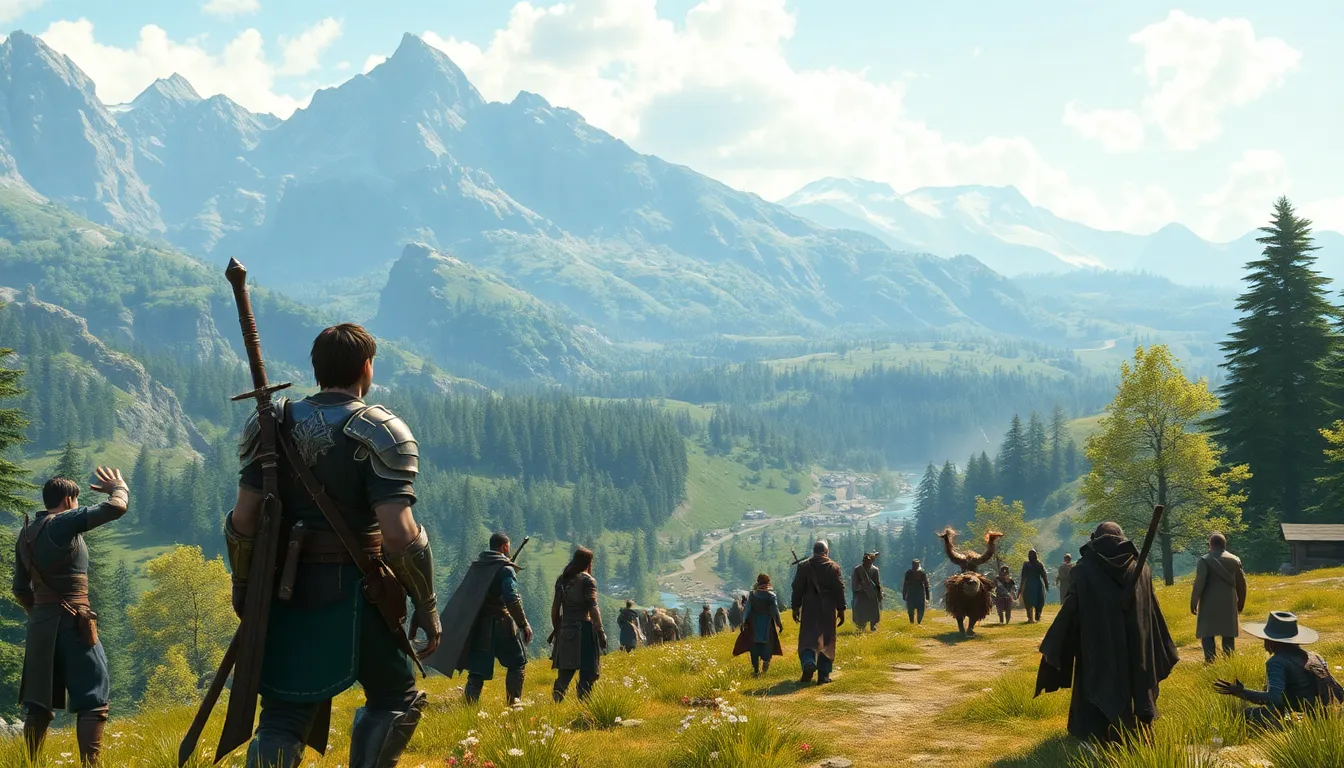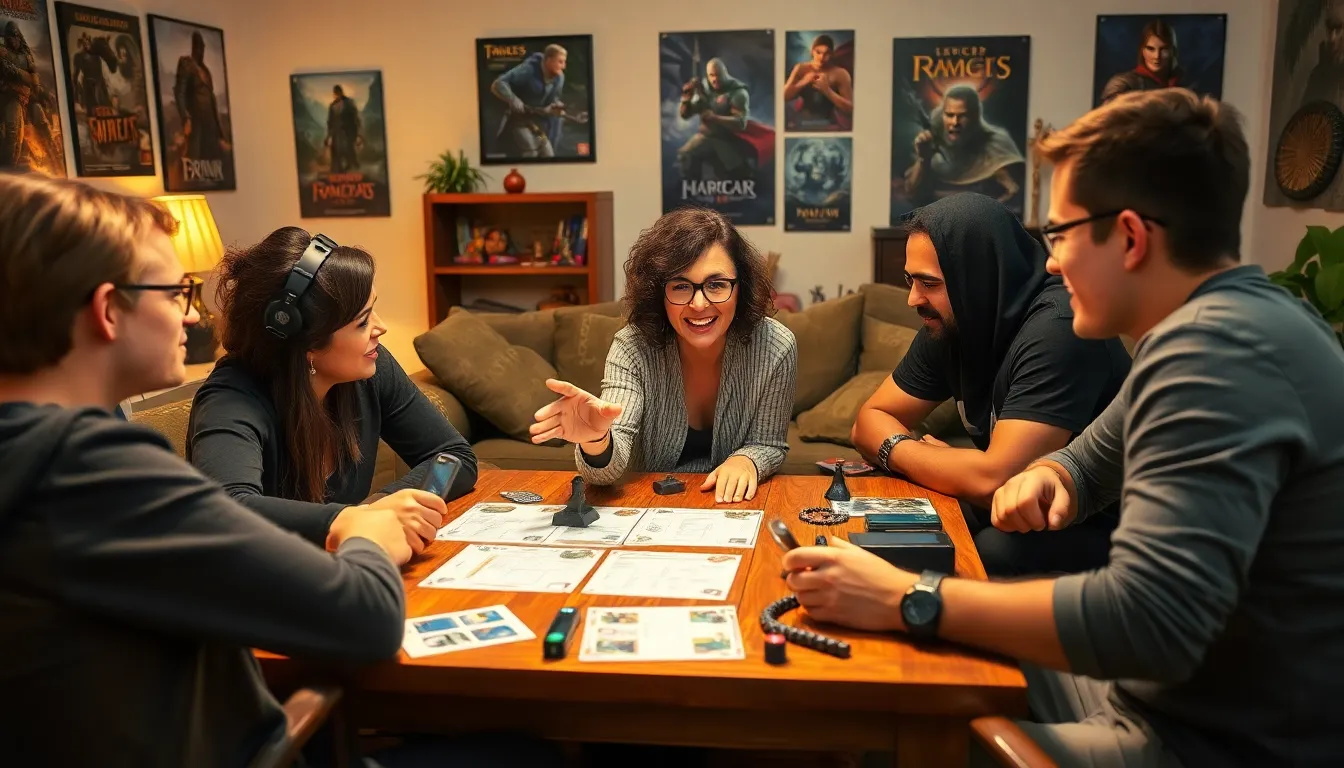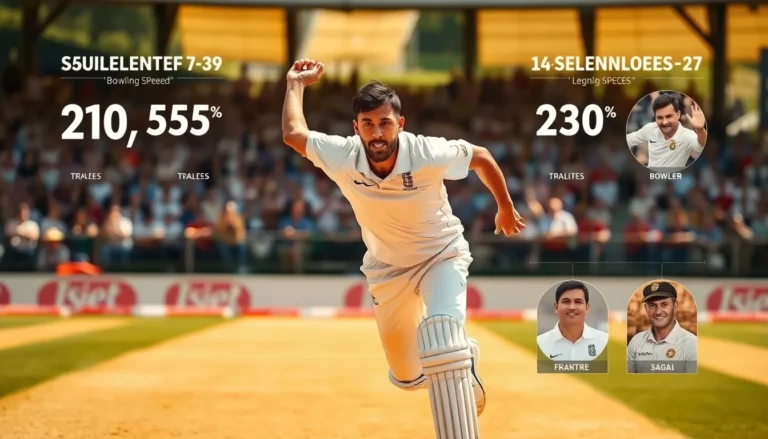In the ever-evolving world of RPGs, every quest, character, and plot twist deserves a fair shake. Gamers and critics alike are on the hunt for the latest gems and hidden pitfalls in this dynamic genre. With new titles dropping faster than a rogue’s dagger, it’s crucial to sift through the noise and find the critiques that truly matter.
Table of Contents
ToggleOverview of Latest RPG Critiques
Recent RPG critiques focus on mechanics, storytelling, and player engagement. Engaging quests often garner positive feedback, while overly linear narratives receive criticism. Game worlds that encourage exploration typically attract players, but critics often highlight the lack of depth in certain environments. Characters that evolve throughout gameplay resonate well with audiences, enhancing the overall experience.
Top publications emphasize the significance of character development. Analysts point out that games offering customizable stories tend to keep players invested. Diverse character arcs and intricate relationships contribute to memorable gameplay. Reviews also mention the importance of pacing, noting that excessive filler content detracts from immersion.
Visuals play a crucial role in current critiques. Graphically stunning games enhance player engagement, yet some titles fail to innovate in visual design. Critics note that charming art styles can compensate for technical limitations, while others call for originality in graphics. Audio design is also key, with soundtracks that underscore the emotional intensity of pivotal moments.
Current trends show a shift toward inclusivity in RPGs. Titles that incorporate diverse representation receive applause. Critics argue that expanded narratives benefit from varied perspectives, enriching player experiences. Continuous dialogues about representation in gaming shape future releases.
Data from critiques emphasize the need for developers to respond to player feedback. Gamers expect continual updates and improvements post-launch. Reviewers highlight the importance of community engagement, which can lead to enhanced gameplay experiences. Collaboration between players and developers fosters innovation in RPGs.
By focusing on these critical elements, the latest critiques guide both developers and players in navigating the evolving landscape of role-playing games.
Major Trends in RPG Gameplay

Recent trends in RPG gameplay highlight the growing complexity and player expectations. Open world design and deep narrative elements are at the forefront of these changes.
Emergence of Open World Design
Open world design increasingly captivates players by providing vast environments to explore. Freedom in gameplay allows players to tackle quests in varied orders, promoting personal choice. New titles often incorporate dynamic weather and day-night cycles to enhance immersion. Other games focus on environmental storytelling, where players uncover lore through interactions with their surroundings. Many developers emphasize creating a living world full of NPCs, making atmospheres feel authentic. This trend towards expansive terrains enables deeper player engagement while fostering exploration.
Focus on Narrative and Character Development
Narrative quality has become essential in recent RPG critiques, prioritizing storytelling alongside gameplay mechanics. Rich character development allows players to form emotional connections, enhancing overall immersion. Games are incorporating branching narratives that adapt based on player choices, providing unique experiences for each playthrough. Emotional depth in character arcs invites investment and attachment, while diverse representation within these stories resonates with broader audiences. Integration of side quests that enrich main storylines becomes increasingly prevalent, allowing players to engage with characters beyond combat and mechanics. This focus on narrative and character reinforces the importance of meaningful experiences in RPGs.
Visual and Technical Advancements
Visual and technical advancements significantly impact RPG critiques. Enhanced graphics and performance improvements reshape player experiences in the genre.
Graphics and Art Style Evolution
Realistic graphics enhance immersion in RPG environments. Titles like “Final Fantasy XVI” showcase lifelike character models, drawing players deeper into the story. Art styles also play a crucial role; unique aesthetics can set a game apart while compensating for technical limitations. Games that feature diverse artistic approaches, such as “Hades” or “Genshin Impact,” attract different audiences. Studies indicate that innovative visuals correlate with higher player engagement, reflecting a trend in prioritizing design alongside narrative.
Performance Improvements Across Platforms
Performance enhancements have transformed gameplay across various platforms. Modern consoles leverage advanced hardware to reduce loading times and improve frame rates. Smooth performance on PCs creates immersive experiences that were previously unattainable. Many developers optimize games for cross-platform play, ensuring consistent performance regardless of the device. Titles that support features such as 60 FPS on consoles or enhanced graphics on high-end PCs illustrate this shift. As performance continues advancing, player satisfaction and engagement expand within the RPG realm.
Community and Player Feedback
Community interactions and player feedback shape the landscape of RPG critiques today. Gamers increasingly influence design decisions, promoting transparency and responsiveness from developers.
Impact of Social Media on Critiques
Social media platforms amplify voices in the gaming community. Players share experiences and critiques instantly, creating a dynamic feedback loop with developers. Platforms like Twitter and Reddit serve as forums where gamers discuss and evaluate game features, providing real-time insights into player expectations. Trending topics often highlight common concerns, such as narrative coherence or technical performance. Developers who engage with this discourse can adapt and innovate their projects based on direct community dialogue.
Analysis of User Reviews and Ratings
User-generated reviews and ratings offer a rich resource for understanding player sentiment. Rating systems on platforms like Steam or Metacritic reveal overall trends in player satisfaction. Scrutinizing these reviews can uncover both praise and criticism regarding specific game mechanics or story elements. Players often express their preferences for character development and exploration opportunities, providing actionable insights for future game iterations. Analyzing these ratings helps developers identify strengths and weaknesses, guiding enhancements for upcoming titles in the RPG genre.
The landscape of RPG critiques is evolving rapidly as players seek deeper engagement and more meaningful narratives. Developers must stay attuned to player feedback and community interactions to create immersive experiences that resonate with audiences. With a focus on character development and innovative mechanics, the genre continues to push boundaries.
As new titles emerge, the importance of striking visuals and captivating storytelling cannot be overstated. The shift toward inclusivity and diverse representation enriches the gaming experience for all players. By prioritizing these elements, both developers and critics can help shape the future of RPGs, ensuring they remain a dynamic and engaging form of entertainment.





